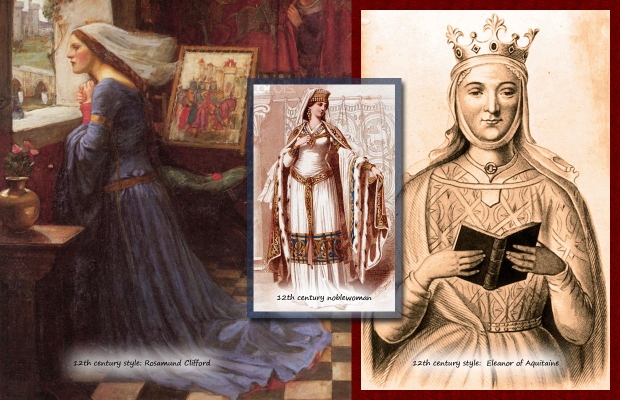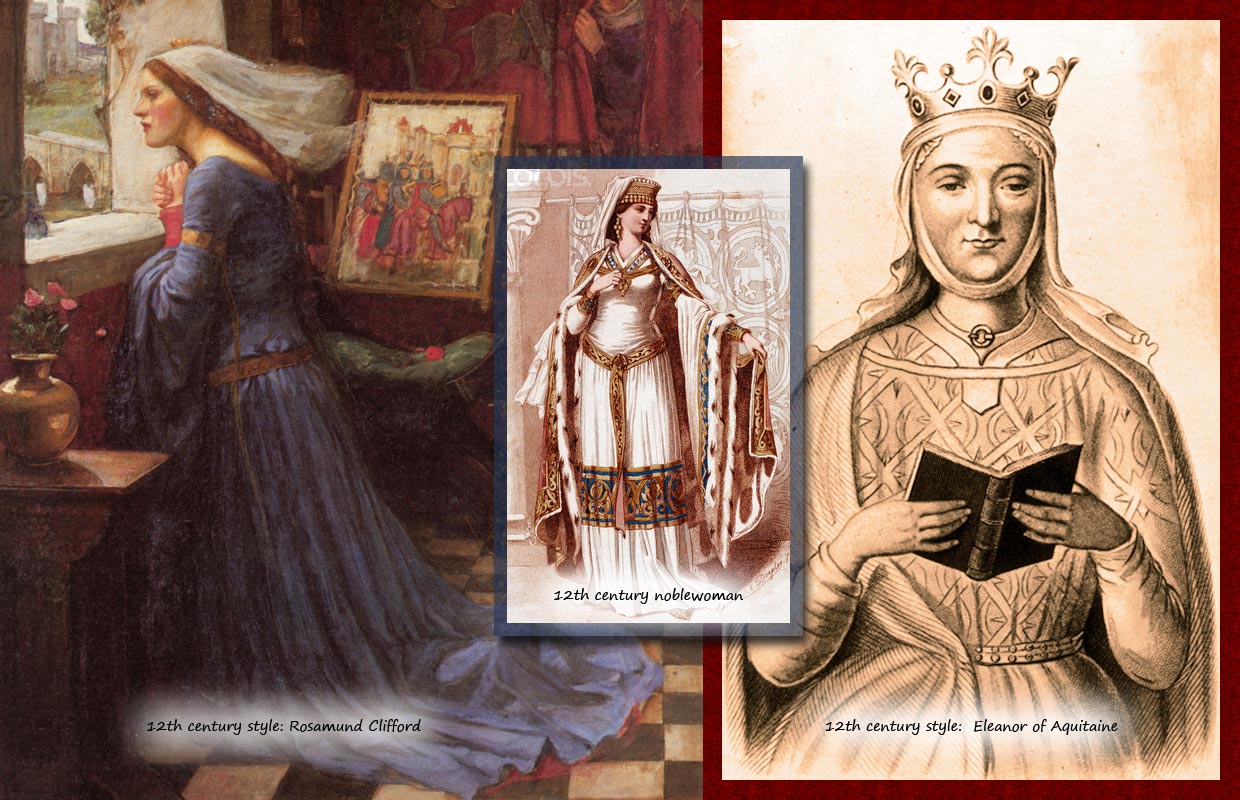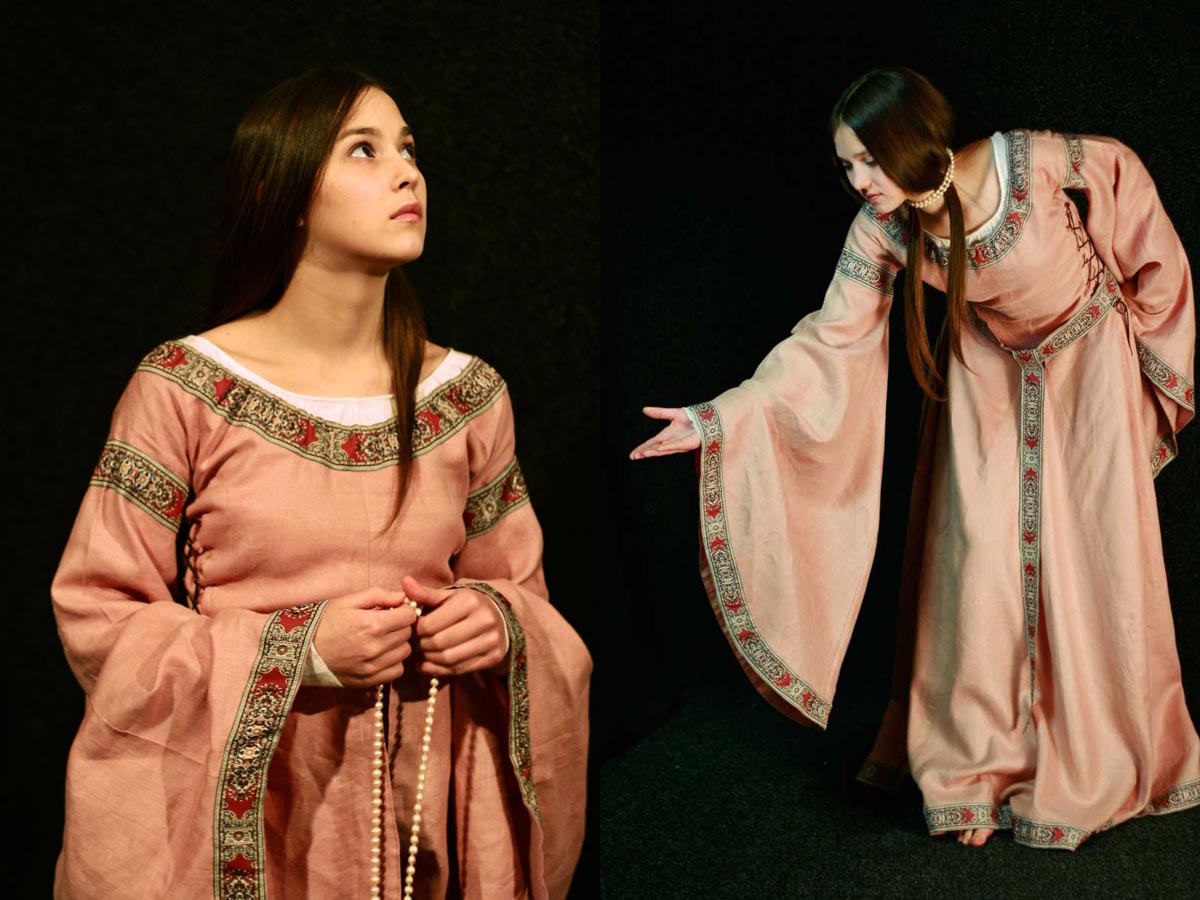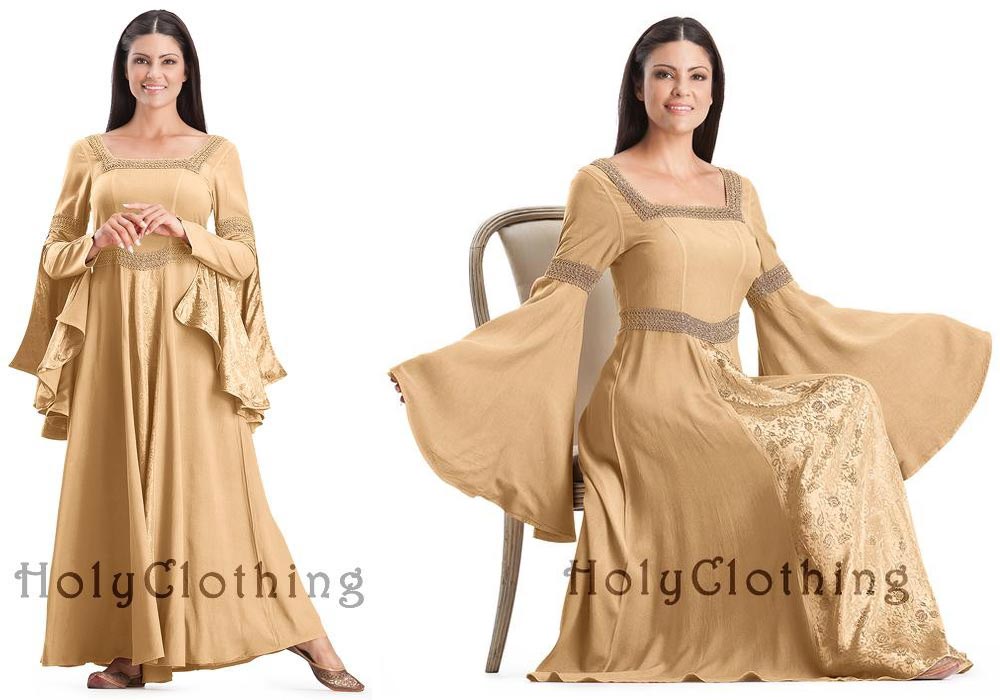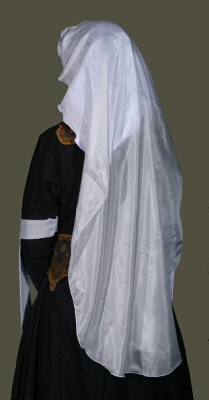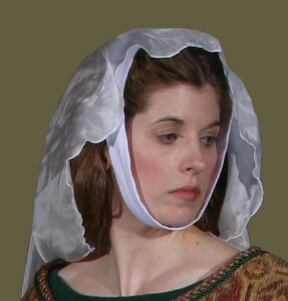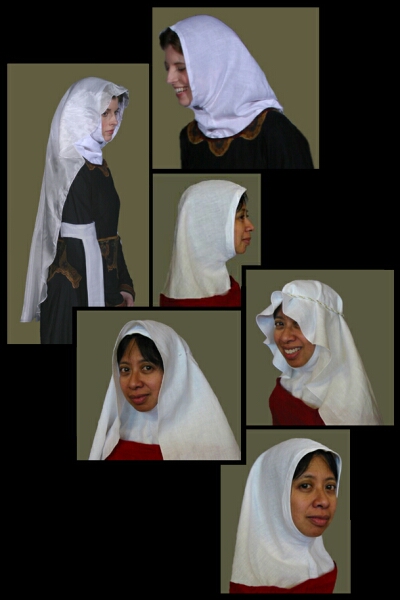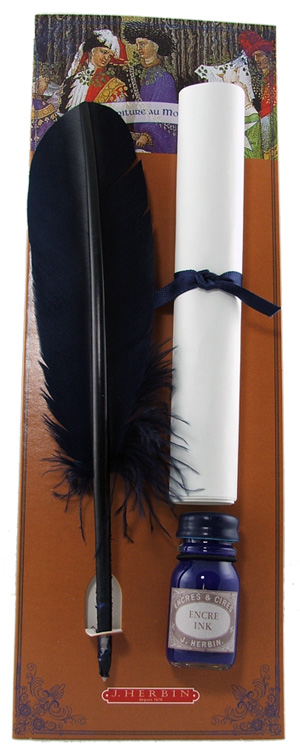Eleanor of Aquitaine is famed for her great patronage of the arts, and one of the finest poets at her court may have been her own sister-in-law. Marie de France (ca. 1140-1200) was a high-ranking Anglo-Norman noblewoman whose precise identity is unknown. She referred to herself briefly in her poems (“My name is Marie and I am from France”), but offered no other biographical details. Based on clues here and there, historians have long speculated that she was a half-sister to Eleanor’s husband, Henry II. Whoever she was, her fables, poems, and romances were brilliant. Not only was her work incredibly popular with her contemporaries, but it had an enormous influence on the development of French and English literature.
There are no surviving images of Marie de France, but her clothing would have been similar to what Eleanor of Aquitaine and other noble ladies of the period were wearing. (And by the way, you can easily turn this whole thing into an Eleanor of Aquitaine costume just by adding a crown.) The fashionable gown in the late 12th century was the bliaut, a dramatic side-laced dress that hugged the figure and flared out to a full skirt. Sleeves were long and bell-like. Veils were de rigueur, and Eleanor of Aquitaine is said to have introduced the barbette, a chin strap which framed the face and provided a convenient perch for securing the veil. The pieces we suggest, from left to right:
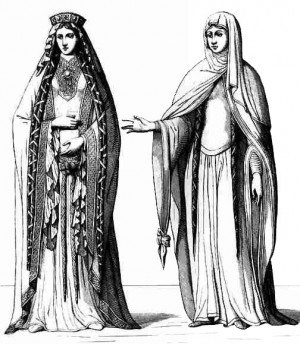
Twelfth century French noblewomen. From European Civil and Military Clothing: From the First to the Eighteenth Century by Frederick Stibbert.
1. Twelfth-century gown. This beautiful gown is made of linen and follows the authentic bliaut pattern, with side-lacing, tapestry trim, and a sash belt. It’s perfect. Unfortunately, it’s also expensive ($189). It’s even more expensive when you add a medieval chemise, which is the proper undergarment to make sure your arms and chest are covered (people didn’t show much skin back in the day). If you can afford it, then by all means go for it. But we also suggest a less expensive alternative in #2.
2. Alternate choice: Arwen dress from Holy Clothing. This isn’t trying to be an authentic medieval gown, you understand; it’s more a fantasy kind of thing. But it’s an excellent value (about $65) and looks wonderful. Also available in a bunch of other colors and in sizes up to 5X.
3. Silk oval veil. You have to wear a veil to be a proper 12th century lady, and this one is ideal. You can also get a slightly cheaper linen veil (choose oval rather than rectangular). As for how to attach the veil to your head, first we suggest you read this page for an excellent discussion of how all this headgear works. Then we suggest you get either a barbette (#4) or a wimple (#5).
4. Barbette. This is the chin strap allegedly introduced by Eleanor of Aquitaine. It fastens on top of your head, and then you pin your veil to it. (You might need to use a fillet as well.) Notice that this arrangement will not provide you with any coverage of your neck and upper chest, which is why you might want to consider a wimple (#5) instead.
5. Wimple. Instead of a barbette and fillet, you can just wear a wimple, which is the hood-like thing that we nowadays associate with nuns. It covers your head and neck, and then you pin your veil to the top. This would be an especially good style if you’re wearing the Arwen dress, which is a little too low-cut to look properly medieval. You can either tuck the wimple into the top of the dress or drape it around your shoulders.
6. Medieval writing set. This is a prop to carry with you in case you want to dash off some poems. In Old French.
Main illustration credits: The painting of Rosamund Clifford is Fair Rosamund by John William Waterhouse. (Rosamund was the favorite mistress of Henry II and a very unpopular person with Eleanor of Aquitaine.) The drawing of Eleanor is based on her tomb effigy; we don’t know the artist. The costume plate of a 12th century noblewoman looks like a Victorian thing, but we have no information about it.

